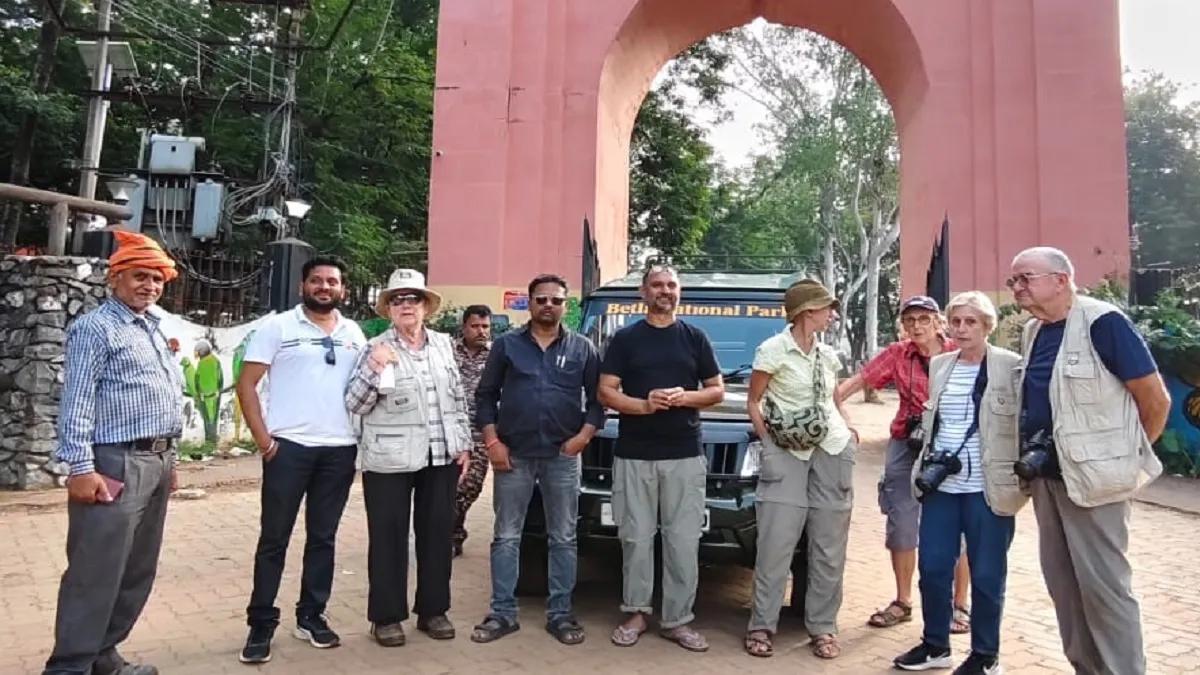




*French team of tourists in Betla forest, Latehar district, Jharkhand on November 3, 2025
Foreign tourists have visited Betla National Park in Palamau,a popular wildlife destination.
It offers various safaris like jeep and elephant rides to observe wildlife such as bison, elephants, tigers, and leopards. As such the site has earned the acronym 'BETLA'.
The park is open year-round, though November to March is the most suitable time to visit. Aware of it, a team of French travellers landed at Betla.
Apart from watching the green forest, wild life and birds of Betla, these French men and women who had been brought by the Tamera travel company of France that specialised in adventure, trekking, and cultural tours, interacted with men and women of primitive tribes such as Asur,Brijia,Korwa and Paharia.
Most of them were spotted studying the traditional life style, folk art and culture of these tribals.Asked about their experience, one of these French travellers said that the “ humanist attitude and conduct showing their simplicity” was apparent.”This is simply a trait of humans getting lost in urban world.”
During their tour, French tourists had also visited Sakhuwa Pani in Netarhat, Dumar Path and Jobi Path.Inside Betla, they watched weekly market called Kutmu Haat Bazar and visited historical Palamau Fort.
This comprised twin Forts- the Old Fort (Purana Kila) and the New Fort (Naya Kila). Both were built by the Chero dynasty in the 17th century in the Latehar district of Jharkhand, India.
Located near the Palamau Tiger Reserve and along the Auranga River, it is known for its defensive structures, ancient architecture, and strategic importance.
None of them saw any elephant, leopard or tiger in Palamau Tiger Reserve.French travellers who were brought to India from France by Tamera travel company, were guided by New Delhi based Go Travels Secretary Amit Kumar and Translator Sanu Giri who helped them communicate with local tribals.
Amit Kumar told journalists that French travellers were studying tribal culture and their rural life style.



